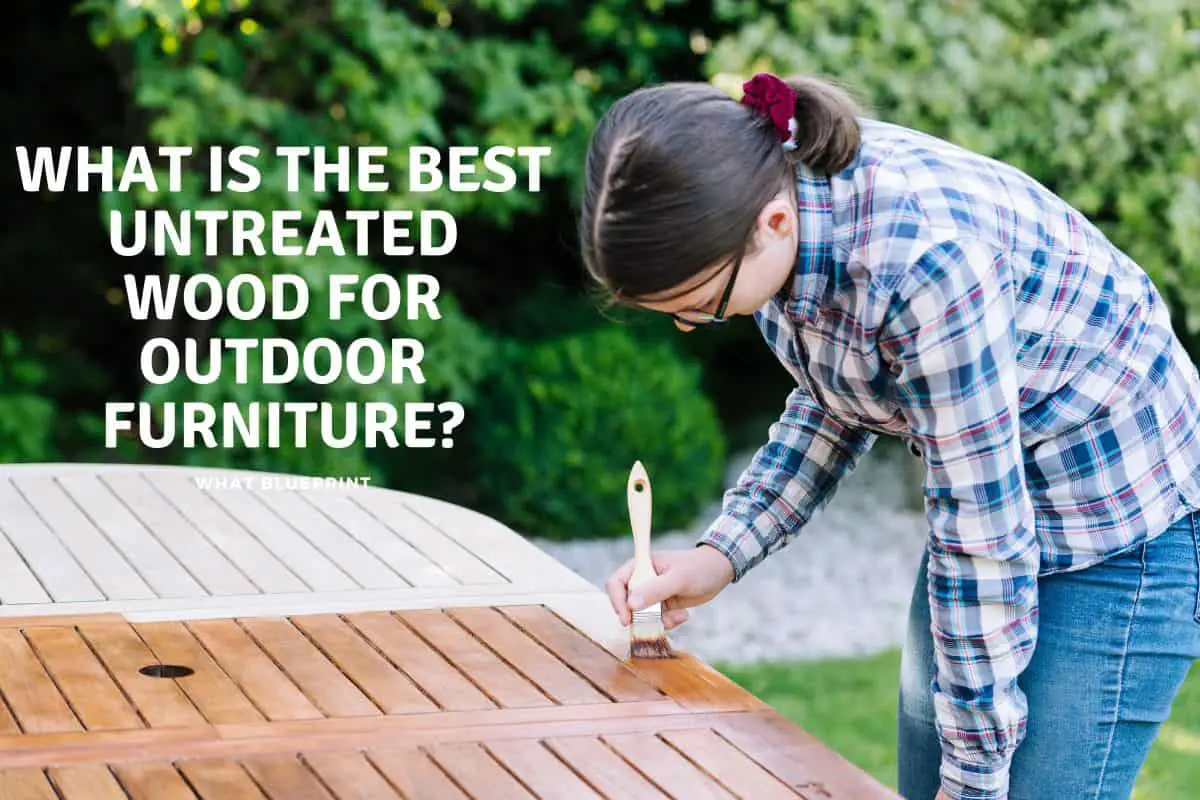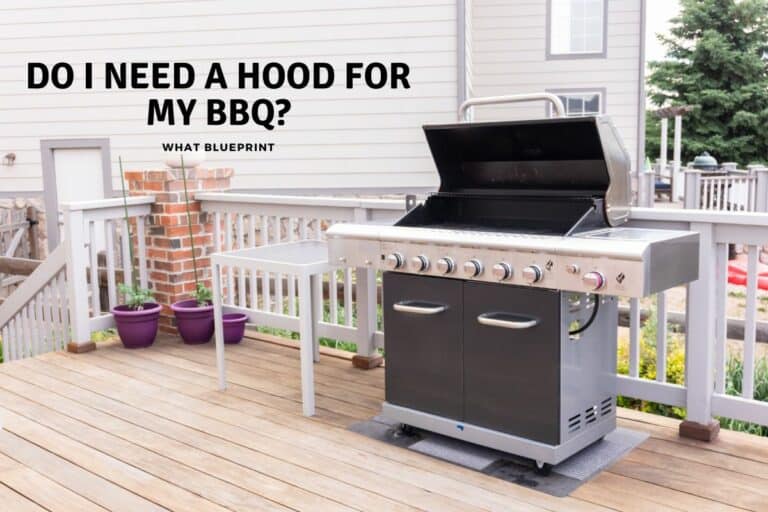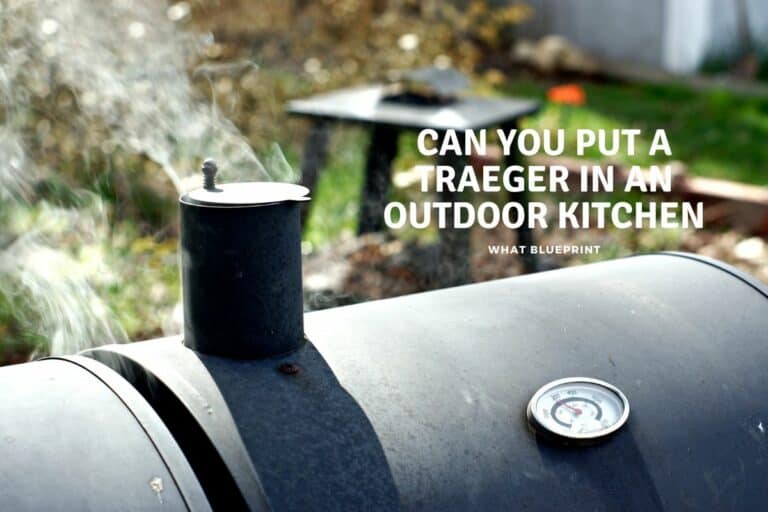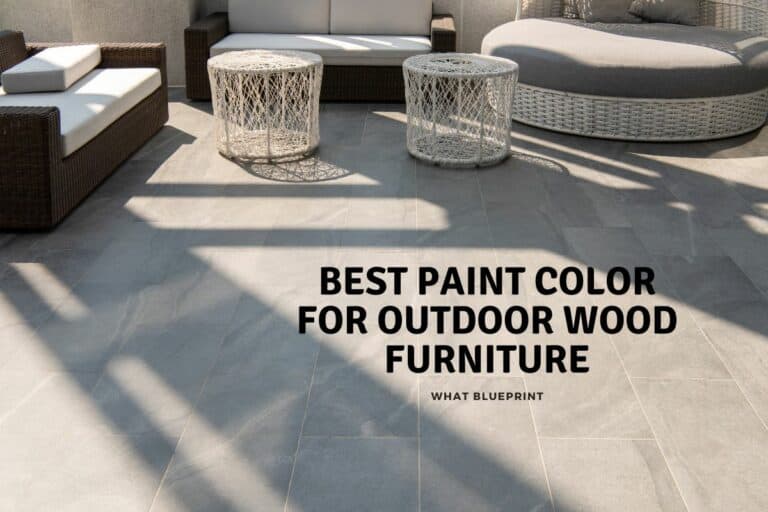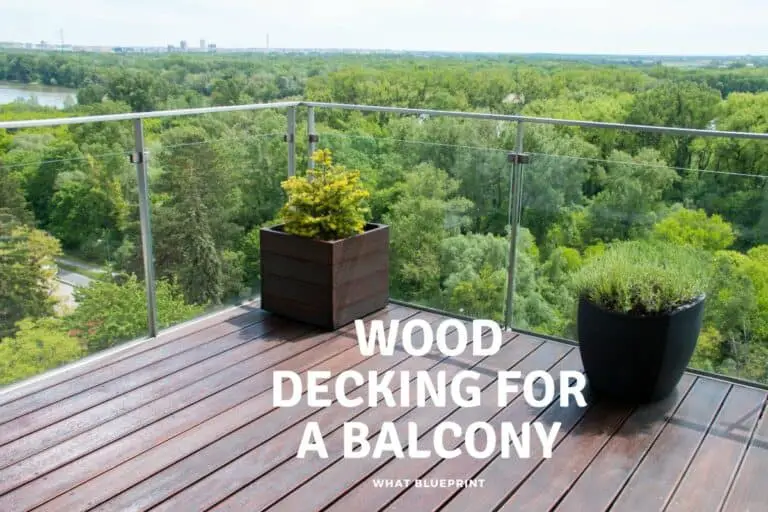What Is The Best Untreated Wood For Outdoor Furniture?
While pressure-treated wood is better suited to outdoor furniture as they are protected from the elements with UV-resistant sealants, it can contain harmful chemicals, so it’s vital to choose robust untreated wood varieties for your outdoor furniture that weather well.
The best untreated wood for outdoor furniture includes Ipe, Western red cedar, California redwood, bald cypress, black locust, and teak wood varieties that are durable and naturally rot-resistant. Some untreated wood varieties are more affordable than others if grown in your county.
Although certain untreated wood species are more suited for outdoor furniture, they do need a level of care and maintenance. So, if you want to make a wise investment in durable furniture – read on!
The Best Untreated Wood Varieties
The hardiness and durability of untreated wood are determined only by its species, not the sealant, so it’s vital to choose a suitable if you want outdoor furniture that will last for decades.
Great commercially available rot-resistant outdoor furniture wood species include teak, black locust, bald cypress, California redwood, Western red cedar, including Ipe.
While they are all great options, Ipe, produced from Tabebuia, or the Florida “trumpet tree,” requires a special mention as it’s a popular wood choice for outdoor furniture. It is incredibly dense and matures beautifully with time to a stunning pale silver-and-grey color.
Ipe is also a sustainable wood type if you use Forest Stewardship Council (FSC) certified timber. However, it’s important to remember that your location will determine your untreated wood options and the cost of the material.
So, while redwood is commonly used in the western United States because it is readily available, western red cedar is mostly used in the eastern US, including the Midwest. Cypress is more popular and affordable in the South, including the Southeast, as it grows in those regions.
There is also a difference in the lifespan of all these untreated wood varieties. For example, exposed and weathered redwood has a lifespan of at least 50 years, while less popular wood varieties like pine will only last 5-10 years.
Cedarwood varieties have a 15–20-year life span and will weather much better than pine varieties, and cost far less than pricy redwood varieties.
Although, it’s important to point out that while redwood and western red cedar wood varieties are stable, decay resistant, and incredibly stable, they both tend to split when you attach fasteners.
Moreover, western red cedar and redwood bleed tannins or create stains when you add fasteners, making painting them a hassle as they can appear even after you have painted the furniture. Although you can avoid that if you prep the wood correctly.
Another great option for untreated wood furniture is cypress wood which is produced from swamp trees that feature a conical base with tree roots that extend out of the swampy water.
Cypress wood comes in various colors ranging from off-white hued sapwood to a pale-yellow-brown, including red and dark brown heartwood colors.
Most popular inland cypress heartwood varieties are light in color with a stunning ash-hued woodgrain pattern, and they weather beautifully with time.
How To Protect Untreated Wood Outdoor Furniture
While certain untreated wood species are incredibly durable, they need some protection to expand their lifespan. So, here are a few super easy ways to shield them from the elements.
Keep Them Bone Dry
Even the hardiest wood varieties will start to rot once exposed to funguses that rely on moisture to thrive, and besides water and oxygen, fungi start to grow at 32–90-degree temperatures.
So, keep your outdoor furniture dry, and ideally store them in a temperature-controlled environment to prevent harmful microorganisms from damaging your beautiful furniture, especially in rainy seasons like spring and fall when they are most susceptible to damage.
Avoid Direct Sunlight
Sunlight bleaches and degrades wood’s natural oils over time, depleting essential natural protective chemicals like lignin. Therefore, store your outdoor furniture in a sheltered area where possible.
If you have other wood furniture or decking in your outdoor space we have a selection of articles you can access here as well. You can search or pick from the selection below.
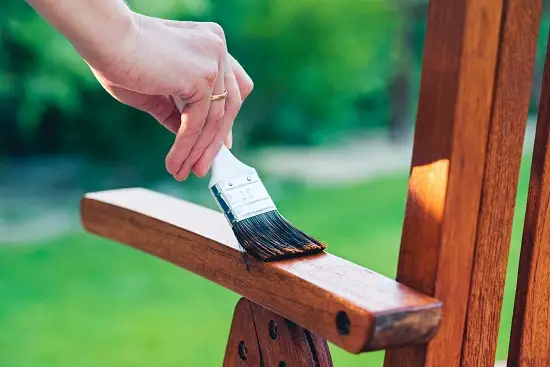
Sealing Options For Unprotected Wood
Even though certain untreated wood species are more durable than others, you may reach a point when it is necessary to protect them from the elements and expand their lifespan. So, here are a few synthetic and organic sealant options to consider.
Synthetic Wood Sealants
There are several commercially produced water-resistant wood sealers and paints on the market that contain UV protection features ranging from clear types to those that contain stains or dyes.
While clear sealants are a great option to restore the wood’s natural color, the pigmented versions are excellent if you want a new look or a wood color that matches your other outdoor furniture pieces.
Organic Borate Sealants
If you are dead set against synthetic sealants, consider using borate as a safe alternative as it is produced with organic ingredients like rock minerals and living organisms, including water. It is even used to seal indoor furniture, so it’s not a harmful chemical.
Moreover, applying it is simple; you only need to mix the thick borate liquid with hot water in a tank or hand sprayer.
Once you are ready, tip your furniture over and apply an evenly sprayed borate application to the underside of your furniture, especially the bottom part of the table and chair legs that are more exposed to puddled water.
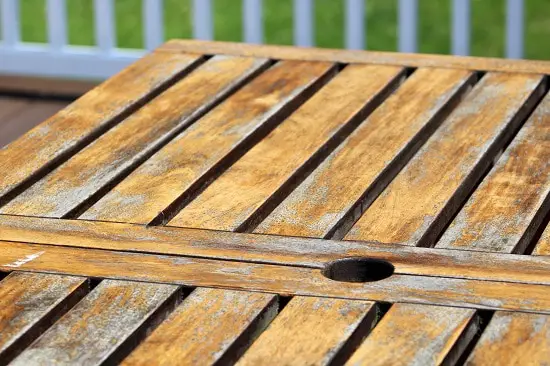
Moisture Damaged Untreated Wood Outdoor Furniture Repairs
If you have untreated wood furniture that has been exposed to wet weather conditions for too long and has been damaged, it is not too late to restore them.
Here is a step-by-step guide to saving them:
Step 1: Your untreated wood furniture is salvageable if it does not show signs ofwood rot or mold, so inspect it thoroughly before you waste time and money on this DIY project.
Step 2: Wash the wood with organic soap, and absorb as much water as possible with a towel once it has been cleaned thoroughly.
Step 3: Then allow the wood to dry properly in a sheltered area with good air circulation for at least three days. Avoid using an aircon or fans to speed up the process, especially in inclement weather when wood takes longer to dry, as they won’t extract all your wood’s trapped moisture.
Step 4: Once it is bone dry, give it a light hand scuff with 150-grit sandpaper; then, you can apply a wood sealant with a paintbrush in every nook and cranny and on the bottom and top sides of your furniture with even brush strokes.
Step 7: Then let the first coat dry properly before scuffing it lightly with220-grit sandpaper to create a smooth and even finish before applying a second and final coat of wood sealant.
Conclusion
Choosing the best untreated wood for outdoor furniture is a great investment if you protect it as much as possible from the elements and consider applying a quality sealant if needed.
Even when untreated with the proper care they can last years and even generations.

